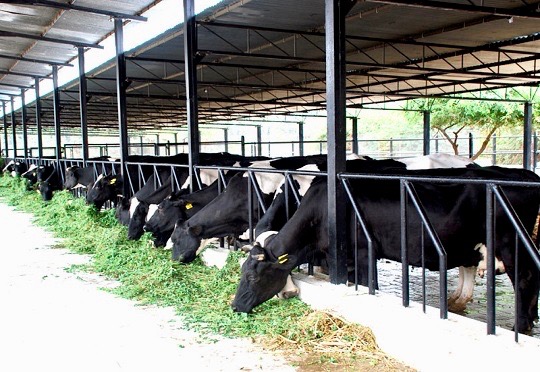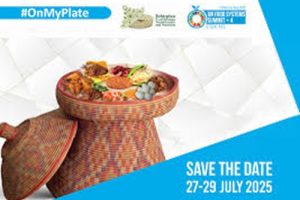
Ethiopia boasts a rich and diverse livestock sector, which plays a vital role in the country’s economy, culture, and livelihoods. Livestock production is deeply ingrained in Ethiopian society, with millions of smallholder farmers relying on livestock for their sustenance and income.
The country is home to a wide range of livestock species, including cattle, sheep, goats, camels, and poultry. These animals are well adapted to the local environmental conditions, such as the highlands, lowlands, and pastoral areas, making them resilient to various challenges.
Livestock in Ethiopia serve multiple purposes beyond meat production. They provide dairy products, such as milk and cheese, which are important components of the Ethiopian diet. Furthermore, livestock play a crucial role in providing draft power for agricultural activities, transportation, and as a source of manure for fertilizing crops.
Ethiopia’s livestock sector offers significant opportunities for economic growth and poverty reduction. It contributes to food security and nutrition by providing a source of protein-rich food products. Additionally, livestock and livestock products contribute to export earnings, boosting the country’s foreign exchange reserves.
However, despite its immense potential, the Ethiopian livestock sector faces various challenges. These include limited access to improved breeds, veterinary services, and quality animal feed. Inadequate infrastructure, such as animal health facilities and market linkages, also pose obstacles to the sector’s development.
Ethiopia is known by abundant animal resource which ranks among the leading countries in Africa and the world but it has not met the needs of the community in terms of quality and quantity of milk yet. Due to this, the per capita milk consumption of the nation does not exceed 66 litters and even the purity of the milk is getting declined.
To address these challenges and harness the full potential of the livestock sector, the Ethiopian government especially Ministry of Agriculture (MoA), in collaboration with international partners, has implemented initiatives and strategies. These initiatives aim to improve livestock productivity, enhance animal health services, promote market-oriented production, and strengthen the resilience of livestock-based livelihoods.
Efforts are also being made to integrate gender-responsive approaches in the livestock sector, recognizing the important role of women in livestock production and value chains.
In fact, Ethiopia’s livestock sector holds great promise for sustainable development, poverty reduction, and food security. With continued investments in research, infrastructure, and policy support, Ethiopia can unlock the full potential of its livestock resources, benefiting both rural communities and the national economy.
In a major step towards realizing the untapped potential of its livestock resources, Ethiopia has unveiled the National Dairy Development Strategy.
Namukolo Covic (PhD), the International Livestock Research Institute (ILRI) Director General’s Representative to Ethiopia, delivered the speech titled “Tracking Evidence and Informing Policy to Rebuild Livestock-Based Livelihoods and Empower Women in Conflict-Affected Areas of Ethiopia.”
This speech emphasized the importance of rebuilding livelihoods and empowering women in regions affected by conflict. The initiative was led by the CGIAR in collaboration with Ethiopian organizations and institutions, working together to achieve a shared vision.
Dr.Covic highlighted the significance of integrating post-conflict Ethiopia’s food systems into the overall development of the livestock sector. Their vision entails a holistic approach from production to consumption, with a focus on enhancing food safety, nutrition, livelihoods, land preservation, restoration, and resilience to shocks and stresses.
Key attention was given to land preservation and restoration, addressing the challenges faced by the National Policies and Strategies initiative.
Ethiopia is going bold steps to rebuild livestock-based livelihoods and empower women in Conflict-Affected Areas. The role of women in post-conflict recovery should align perfectly with Ethiopia’s food systems transformation vision. Women’s livelihoods were recognized as vital for rebuilding communities and improving resilience, Covic said.
The National Dairy Development Strategy emphasized the importance of the six food groups outlined in Ethiopia’s food-based dietary guidelines. Of particular relevance was the inclusion of milk, dairy foods, meat, fish, and eggs. This food group plays a crucial role in promoting a healthy and nutrient-dense food basket, as exemplified by the “Yelemat Tirufat” initiative, which focuses on livestock livelihoods, Covic sated.
Dr.Covic’s speech shed light on the critical work being done to rebuild livestock-based livelihoods and empower women in conflict-affected areas of Ethiopia. The findings of the study and the collaborative efforts of the CGIAR NPS initiative and its partners will contribute to the transformation of Ethiopia’s food systems, fostering resilience, improving nutrition, and enhancing the overall well-being of the population.
Fikeru Regassa (PhD), the State Minister of Agriculture on his part said that the National Dairy Development Strategy aims to leverage the potential of livestock-based livelihoods to aid in post-conflict and drought recovery and empower women.
For years, Ethiopia’s livestock sector received limited investment, hindering its ability to contribute fully to the country’s development. However, the government has now recognized the immense value of livestock-based livelihoods, job creation, income generation, and foreign currency earnings. Livestock resources are seen as crucial assets for building resilient communities, Fikeru stated.
Under the initiative called “Yelemat Tiurfat,” the government of Ethiopia is actively supporting a new livestock revolution. This revolution seeks to improve nutrition outcomes for the Ethiopian population and meet the growing demand for animal-derived food products such as milk, meat, eggs, honey, and fisheries, Fikeru added.
The dairy sector, which plays a vital role in the livelihoods of millions of smallholder farmers across various settings, is a focal point of this revolution, the state minister mentioned. Despite the immense genetic diversity and potential for dairy development in Ethiopia, the current contribution of the dairy sector to the national economy and livelihoods is below its capacity, Fikeru pointed out.
To address these challenges, the Ministry of Agriculture has developed a Ten-Year Development Plan and associated programs, including the Ten-in-Ten development initiative and “Yelemat Tirufat.” These interventions aim to transform the dairy sector through import substitution, increased exports, job creation, and improved access to quality animal-source food, as to the State Minister.
According to Fikeru, The National Dairy Development Strategy provides a clear roadmap for the development of the dairy sub-sector. It aligns with the Ten-Year Perspective Plan, the Ten-in-Ten initiative, and “Yelemat Tirufat.”
The strategy focuses on organized, rationalized, scientific, and sustainable development programs, facilitating knowledge and technology transfer, and enhancing institutional service delivery, the State Minister pointed out.
The launched National Dairy Development Strategy is particularly significant, as it recognizes the potential of dairy in the post-conflict and drought recovery process. Therefore, the strategy aims to empower women, who are its primary target, by creating opportunities for their participation and benefit in dairy sector, Fikeru said.
With the implementation of the National Dairy Development Strategy, Ethiopia is poised to unlock the full potential of its livestock resources, enhance livelihoods, and promote the empowerment of women. The strategy will guide the future development of the dairy sub-sector, ensuring a more organized, efficient, and sustainable approach to dairy production and value chain management, Fikeru concluded.
BY BAHIRU SETEGNE
THE ETHIOPIAN HERALD SUNDAY EDITION 24 DECEMBER 2023





